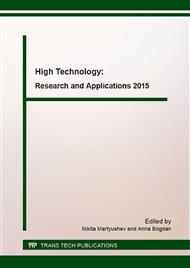p.65
p.70
p.75
p.80
p.85
p.90
p.94
p.99
p.104
Burning Rate Calculation for a Frozen Nanosized Aluminum Suspension
Abstract:
The paper presents a mathematical model for combustion of a frozen nanosized aluminum suspension (ALICE), taking into account the combustion of aluminum in water vapor, the motion of combustion products, and the velocity lag of particles compared to gas. The model was formulated based on Belyaev’s approach to modeling the combustion of volatile fuels [1]. The burning rate calculated is in agreement with the experimental data on the ALICE burning rate and its variation with pressure.
Info:
Periodical:
Pages:
85-89
Citation:
Online since:
February 2016
Authors:
Price:
Сopyright:
© 2016 Trans Tech Publications Ltd. All Rights Reserved
Share:
Citation:


